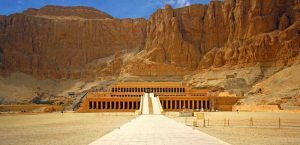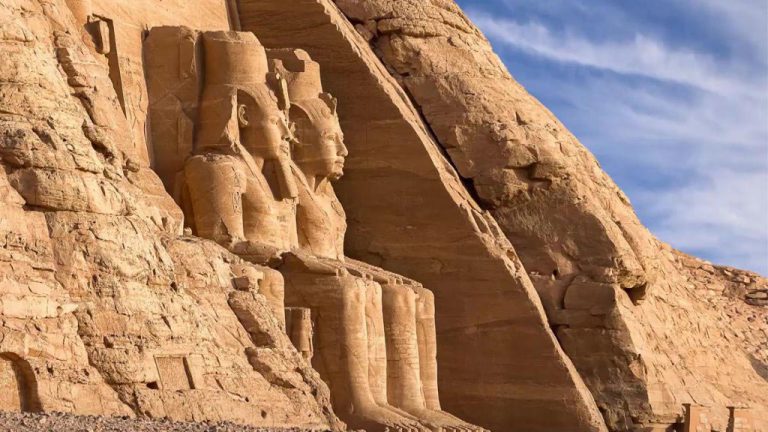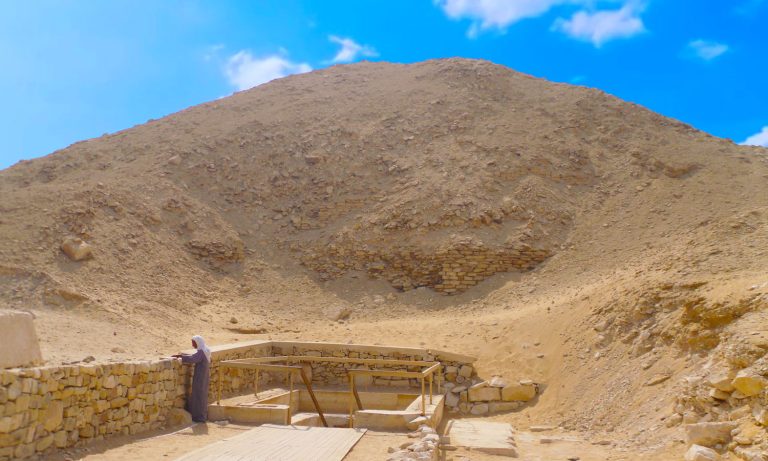The Temple of Hatshepsut: A Majestic Tribute to Egypt’s Female Pharaoh
 Nestled against the dramatic cliffs of Deir el-Bahri near Luxor, the Temple of Hatshepsut stands as a testament to the ambition and legacy of one of ancient Egypt’s most remarkable rulers. Known as Djeser-Djeseru, or “Holy of Holies,” this mortuary temple is a masterpiece of ancient architecture and a must-see for anyone exploring Egypt’s rich history. Join us as we uncover the story behind this iconic temple and why it continues to captivate visitors from around the world.
Nestled against the dramatic cliffs of Deir el-Bahri near Luxor, the Temple of Hatshepsut stands as a testament to the ambition and legacy of one of ancient Egypt’s most remarkable rulers. Known as Djeser-Djeseru, or “Holy of Holies,” this mortuary temple is a masterpiece of ancient architecture and a must-see for anyone exploring Egypt’s rich history. Join us as we uncover the story behind this iconic temple and why it continues to captivate visitors from around the world.
Who Was Queen Hatshepsut?
Queen Hatshepsut was one of the few female pharaohs to rule ancient Egypt. Her reign (1479–1458 BCE) was marked by peace, prosperity, and monumental building projects. Unlike her predecessors, Hatshepsut focused on trade and diplomacy rather than conquest, and her temple reflects her unique vision and legacy.
The Architecture of the Temple of Hatshepsut
The Temple of Hatshepsut is a marvel of ancient engineering and design. Built into the cliffs of Deir el-Bahri, the temple features three terraced levels connected by ramps. Its colonnaded structure and harmonious proportions make it one of the most visually striking temples in Egypt.
Key Features:
Terraced Design: The temple’s three levels symbolize the ascent to the heavens.
Colonnades: Rows of columns adorned with intricate carvings and hieroglyphics.
Reliefs: Detailed depictions of Hatshepsut’s divine birth and her famous expedition to the Land of Punt.
Sanctuary of Amun: The innermost part of the temple, dedicated to the god Amun.
Why Visit the Temple of Hatshepsut?
The Temple of Hatshepsut is more than just an archaeological site; it’s a journey into the life and achievements of a trailblazing ruler. Here’s why it should be on your Egyptian itinerary:
Historical Significance: Learn about Hatshepsut’s reign and her efforts to legitimize her rule as a female pharaoh.
Architectural Beauty: Admire the temple’s unique design, which blends seamlessly with its natural surroundings.
3. Stunning Reliefs: Explore the detailed carvings that tell the story of Hatshepsut’s divine birth and her achievements.
4. Breathtaking Views: The temple’s location offers panoramic views of the surrounding desert and the Nile Valley.
Tips for Visiting the Temple of Hatshepsut
Best Time to Visit: Early morning or late afternoon to avoid the heat and crowds.
Guided Tours: Consider hiring a guide to fully appreciate the temple’s history and significance.
Combine with Other Sites: The temple is close to the Valley of the Kings and the Colossi of Memnon, making it easy to plan a full day of exploration.
What to Bring: Comfortable shoes, sunscreen, and plenty of water.
The Legacy of Hatshepsut
Despite efforts by her successor, Thutmose III, to erase her legacy, Hatshepsut’s temple stands as a powerful reminder of her reign. Today, it is recognized as one of Egypt’s most important archaeological sites and a symbol of female empowerment in history.
The Temple of Hatshepsut is a must-visit destination for anyone traveling to Egypt. Its awe-inspiring architecture, rich history, and stunning location make it a highlight of any tour. Whether you’re a history buff, an architecture enthusiast, or simply a curious traveler, this temple offers a unique glimpse into the life and legacy of one of ancient Egypt’s most fascinating figures.




